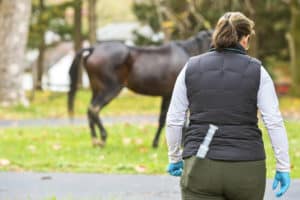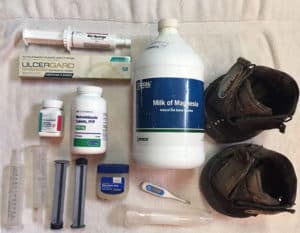Easier Said Than Done?
- Topics: Horse Sense (and Sensibility)
It’s probably safe to say that behind every homebred filly or colt there’s a story. It could be as simple as one live cover, one pregnancy check, and a healthy foal _arrival–smooth sailing. Or, the process could’ve been a little more complex. I had the opportunity to breed a favorite Warmblood jumper that belonged to my university to an accomplished stallion that had also been at the university for a time. The mare, Koko, was in Virginia. Aslan was in Texas. The objective wasn’t rocket science: Make sure the mare was in heat, time her ovulation with a shot, order the cooled semen and have it delivered, inseminate the mare. But it wasn’t that simple. FedEx wasted the first shipment by sending it to Pennsylvania. Then Koko ovulated over a holiday weekend when no overnight shipping was available. But the third time, despite a sheriff’s roadblock delaying delivery for hours, Koko became pregnant and carried to term. Never mind the fact Mocha was born on a hillside in a raging thunderstorm; we had a healthy filly.
I’ll be the first to admit that I didn’t do enough homework before having this mare bred: The collection of breeding articles within our pages this month would’ve been a fantastic resource for planning.
I would have read up on breeding soundness examinations and asked our veterinarian to perform one to determine Koko’s suitability as a broodmare in the first place. After all, she was in her late teens and probably a maidenÑa combination that can reduce a mare’s fertility significantly (I didn’t know that either at the time). We later found out that Koko had been deemed unbreedable several years earlier, so it’s a wonder she caught at all.
Also, I might have asked for information on Aslan’s sperm motility and per-cycle pregnancy rate, and paid close _attention to the farm’s live-foal policy for cues about his fertility. Of course, looking back I realize his rates were probably stellar, considering that Koko conceived
Create a free account with TheHorse.com to view this content.
TheHorse.com is home to thousands of free articles about horse health care. In order to access some of our exclusive free content, you must be signed into TheHorse.com.
Start your free account today!
Already have an account?
and continue reading.

Written by:
Stephanie L. Church, Editorial Director
Related Articles
Stay on top of the most recent Horse Health news with














